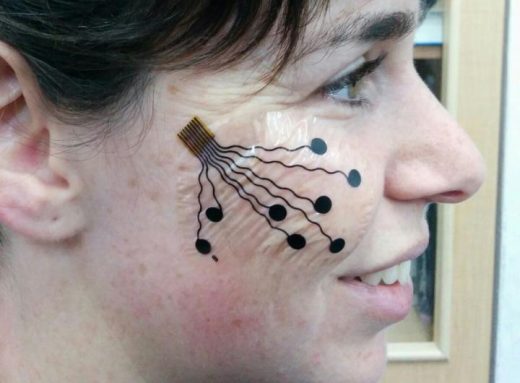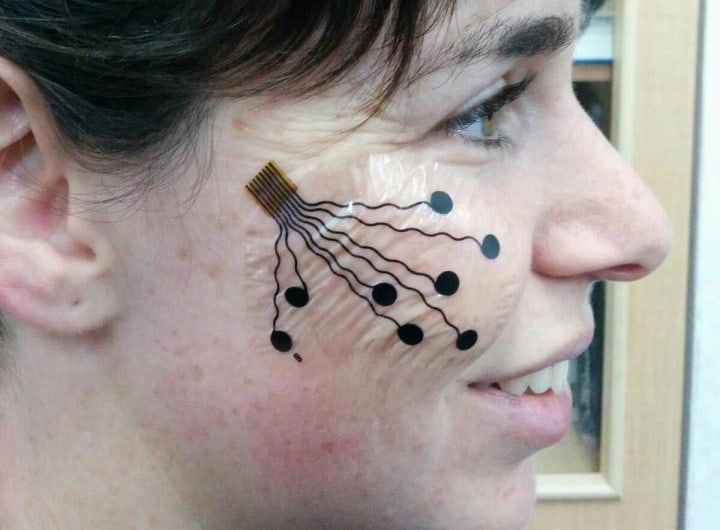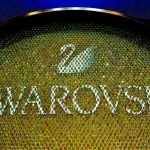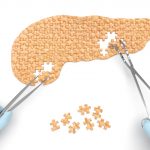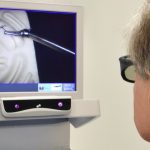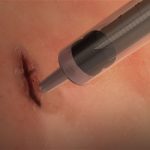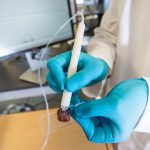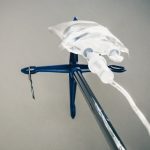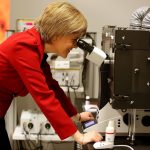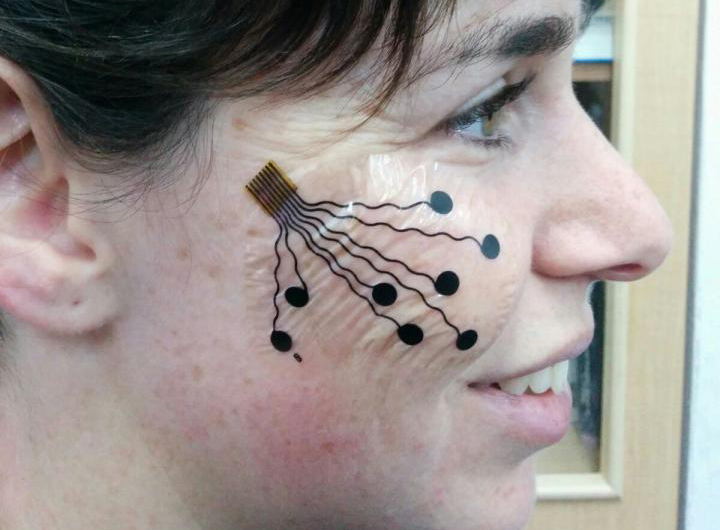Temporary nanotech ‘tattoos’ can track your facial expressions
Wired, electronic temporary tattoos may have started off as fun novelties, but a new type of stick-on, nanotech “tattoo” has already found some practical medical applications. According to a new study published in the journal Scientific Reports, researchers from Tel Aviv University have developed a thin, non-invasive carbon electrode that can be placed on the skin to measure muscle and nerve activity and could soon be used to help restore damaged tissue.
According to the American Friends of Tel Aviv University, the electrode’s developer Professor Yael Hanein created the device as an alternative to electromyography — an “uncomfortable and unpleasant medical procedure” that requires electrodes stuck directly into muscle tissue or unseemly surface electrodes and sticky gel. “Our tattoo permits patients to carry on with their daily routines, while the electrode monitors their muscle and nerve activity,” Prof. Hanein explained. “The idea is: stick it on and forget about it.”
Beyond rehabilitation, Hanein believes the device could be used to study emotional responses by tracking a user’s facial expressions through the electrical signals in their facial muscles. While other researchers study emotions through facial recognition software or even low-tech solutions like subjective questionnaires, Prof. Hanein’s thinks her team has come up with a much more convenient solution. “The ability to identify and map people’s emotions has many potential uses,” Prof. Hanein said. “Advertisers, pollsters, media professionals, and others — all want to test people’s reactions to various products and situations.”
While the prospect of an advertiser tracking your cheek’s every twitch might be a little overwhelming, Prof. Henein also sees her device being put to use to monitor driver alertness, to improve muscle control in stroke victims or even to use it as an interface for amputees to control artificial limbs.
(34)

